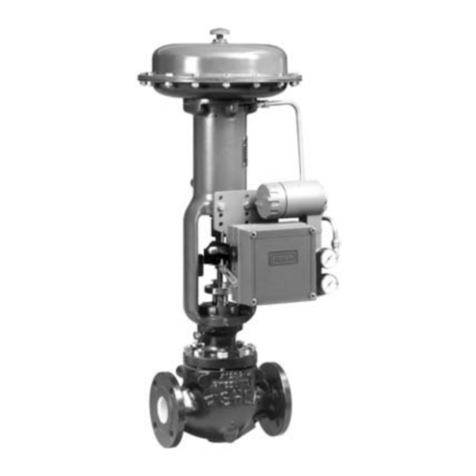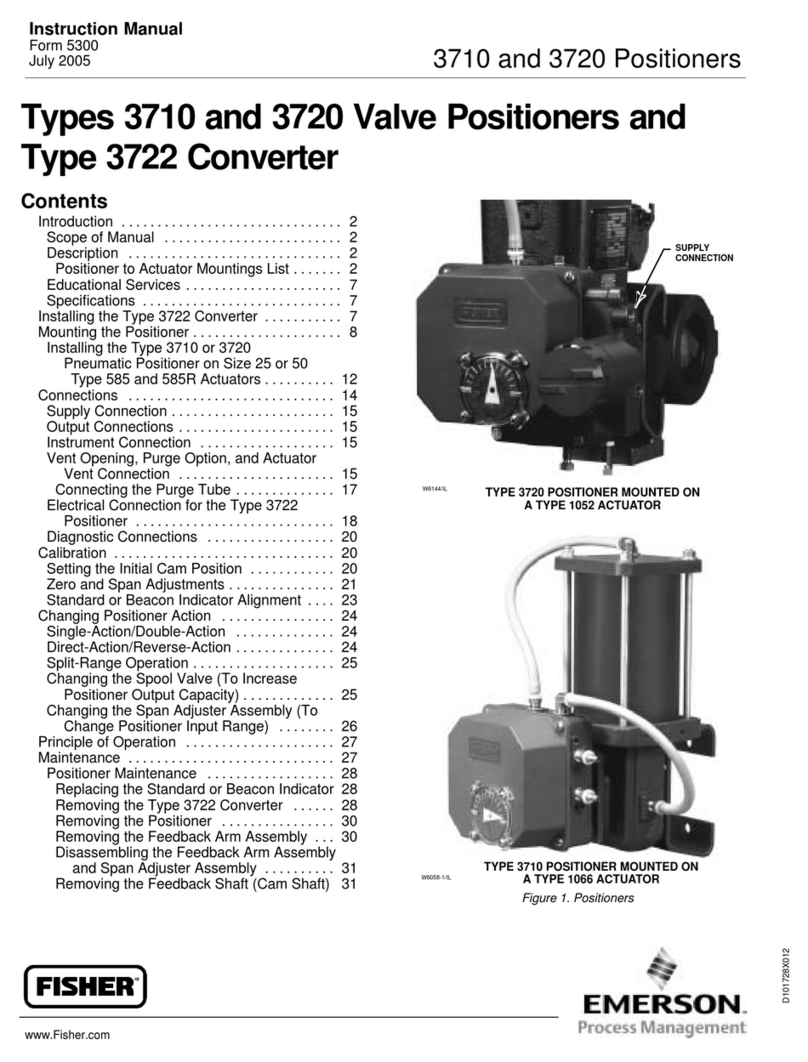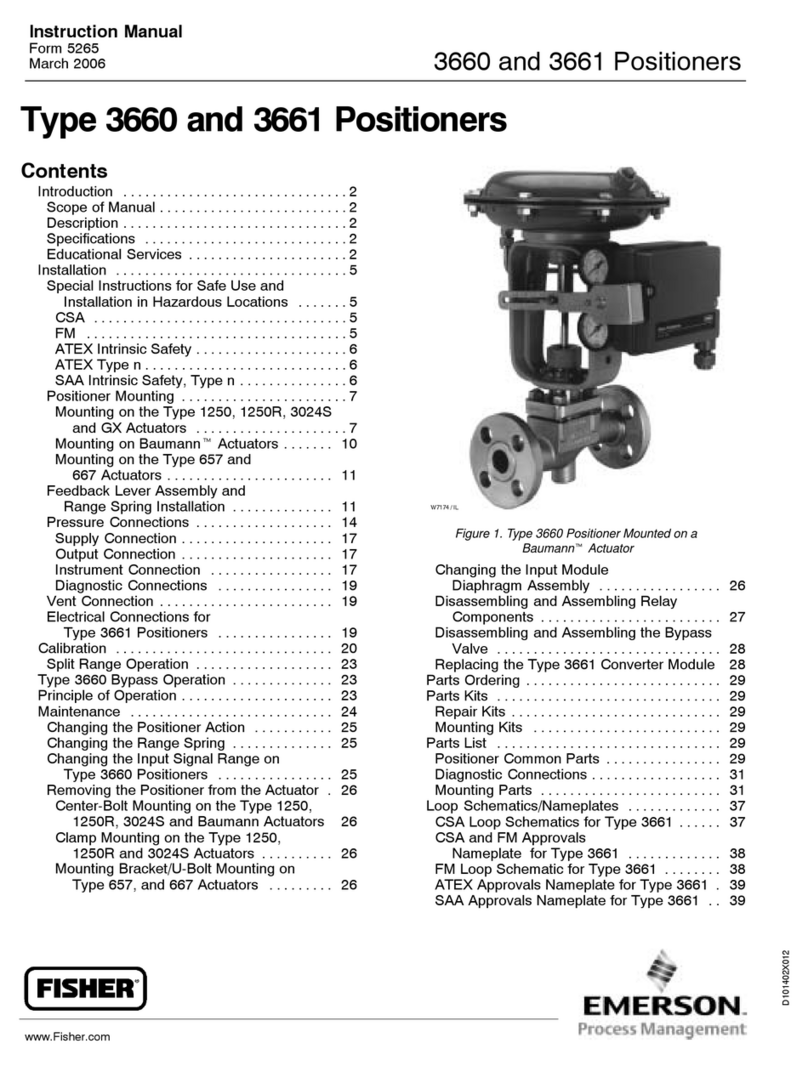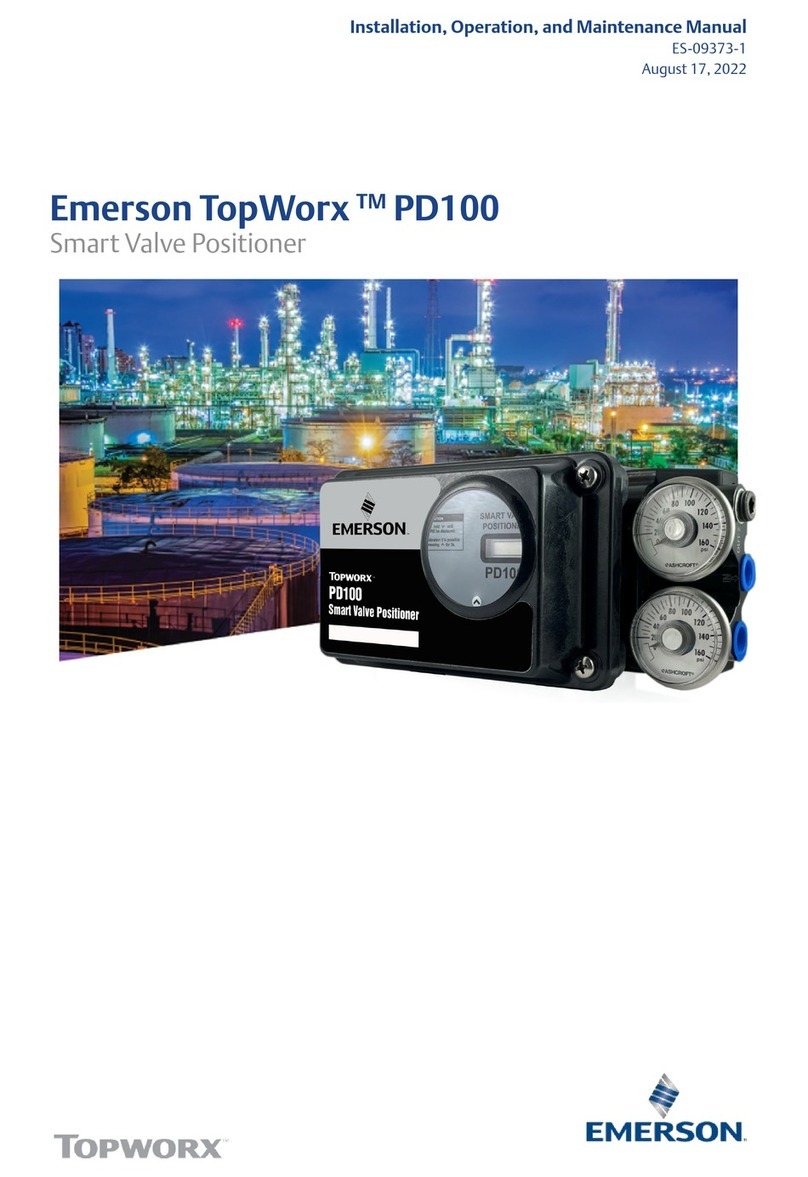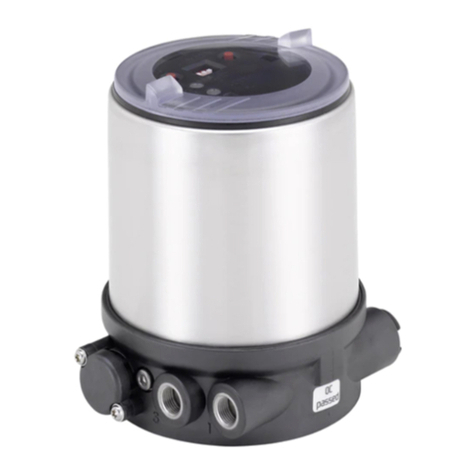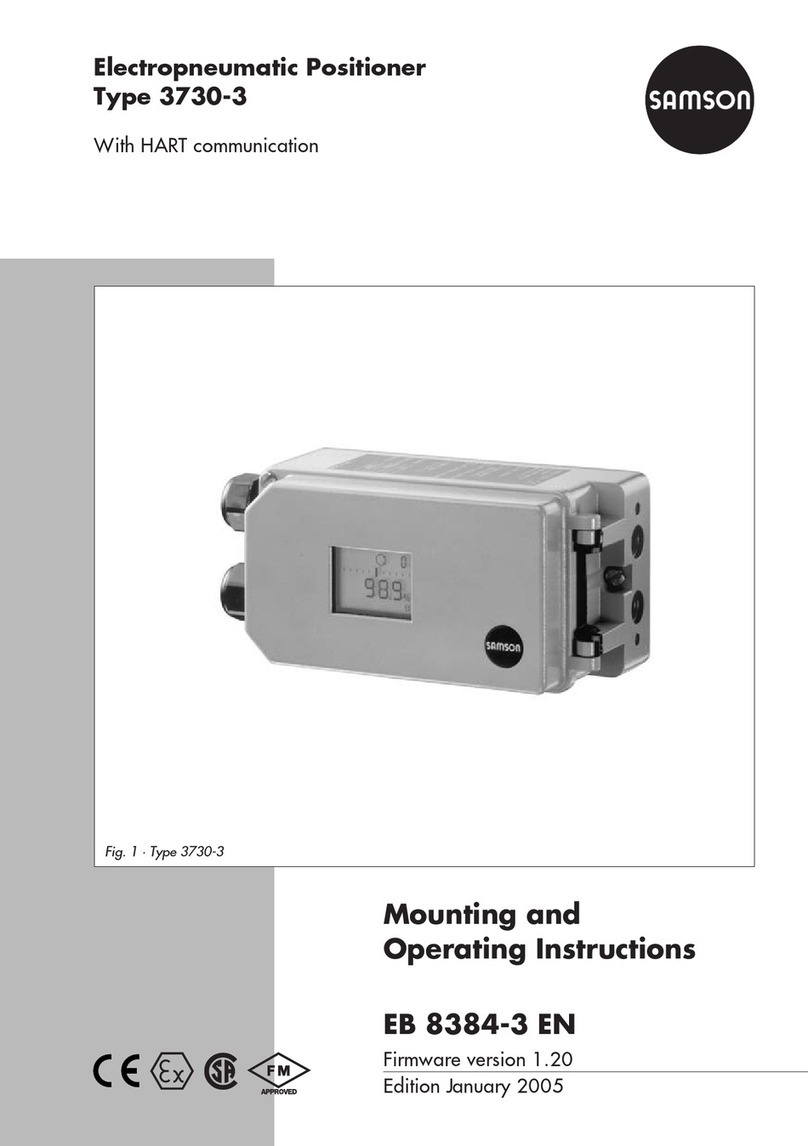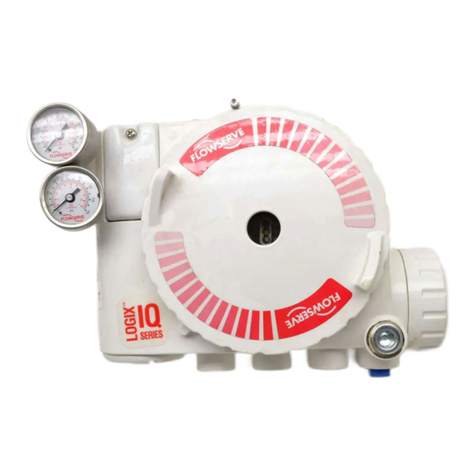
3610J and 3620J Positioners
Instruction Manual
June 2008
2
Contents (continued)
Changing Positioner Action 23. . . . . . . . . . . . . . .
Changing to Direct Action 23. . . . . . . . . . . . . . . .
Changing to Reverse Action 24. . . . . . . . . . . . .
Split Range Operation 24. . . . . . . . . . . . . . . . . . . .
Characterized Cams for 3610J, 3610JP,
3620J, and 3620JP Positioners 25. . . . . . . . .
Principle of Operation 26. . . . . . . . . . . . . . . . . . . . .
Maintenance 28. . . . . . . . . . . . . . . . . . . . . . . . . . . . .
Positioner Disassembly 30. . . . . . . . . . . . . . . . . . .
Removing the Positioner from the Actuator 30
Disassembling the Bypass Valve 30. . . . . . . . .
Disassembling the Gauge Block 31. . . . . . . . . .
Disassembling the 3622
Electro-Pneumatic Converter 32. . . . . . . . . .
Disassembling the Feedback
Lever Assembly 32. . . . . . . . . . . . . . . . . . . . . .
Disassembling the Reversing
Plate and Gasket 32. . . . . . . . . . . . . . . . . . . .
Disassembling the Relay 32. . . . . . . . . . . . . . . .
Disassembling the Summing Beam
Assembly 33. . . . . . . . . . . . . . . . . . . . . . . . . . .
Disassembling the Nozzle Assembly 33. . . . . .
Disassembling the Input Module 34. . . . . . . . . .
Positioner Reassembly 34. . . . . . . . . . . . . . . . . . .
Assembling the Input Module 34. . . . . . . . . . . .
Assembling the Nozzle Assembly 35. . . . . . . . .
Assembling the Summing Beam Assembly 35
Assembling the Relay 36. . . . . . . . . . . . . . . . . . .
Assembling the Reversing Plate
and Gasket 37. . . . . . . . . . . . . . . . . . . . . . . . . .
Assembling the Gauge Block 37. . . . . . . . . . . . .
Assembling the 3622
Electro-Pneumatic Converter 37. . . . . . . . . .
Assembling the Feedback Lever Assembly 38
Assembling the Bypass Valve Assembly 38. . .
Changing Positioner Types 38. . . . . . . . . . . . . . .
Parts Ordering 40. . . . . . . . . . . . . . . . . . . . . . . . . . . .
Parts Kits 40. . . . . . . . . . . . . . . . . . . . . . . . . . . . . . .
Parts List 41. . . . . . . . . . . . . . . . . . . . . . . . . . . . . . .
Positioner Common Parts 41. . . . . . . . . . . . . . .
3622 Electro-Pneumatic Converter 43. . . . . . .
Diagnostic Connections 44. . . . . . . . . . . . . . . . .
Loop Schematics/Nameplates 53. . . . . . . . . . . . . .
Introduction
Scope of Manual
This instruction manual includes installation,
operation, calibration, maintenance, and parts
ordering information for 3610J and 3620J Series
positioners. (i.e. 3610J, 3610JP, 3611JP,
W6594 / IL
Figure 2. 3621JP Positioner with 585C Actuator
3620J, 3620JP, and 3621JP). This manual also
provides field installation information for the 3622
electro-pneumatic converter. Refer to separate
instruction manuals for information on the actuator
and control valve. Contact your Emerson Process
Managementtsales office if assistance is needed
in obtaining actuator or control valve instruction
manuals.
Do not install, operate or maintain a 3610J or 3620J
Series positioner without first Dbeing fully trained
and qualified in valve, actuator and accessory
installation, operation and maintenance, and D
carefully reading and understanding the contents of
this manual. If you have any questions about these
instructions, contact your Emerson Process
Management sales office.
Description
3610J or 3610JP pneumatic positioners and 3620J
or 3620JP electro-pneumatic positioners are used
with diaphragm rotary actuators and piston rotary
actuators as shown in figure 1. 3611JP and 3621JP
positioners are used with 585, 585R, 585C, or
585CR sliding stem actuators as shown in figure 2.
The positioner mounts integrally to the actuator
housing and provides a valve ball, disk, or plug
position for a specific input signal. The positioner
accepts either a pneumatic or milliampere input
signal. Refer to the Type Number Description for a
detailed explanation of type numbers.






